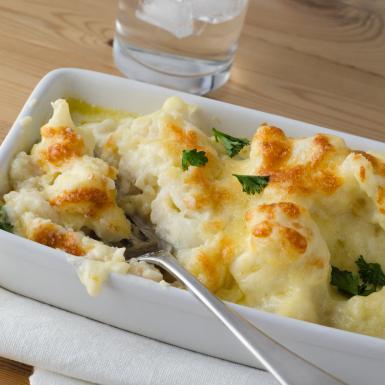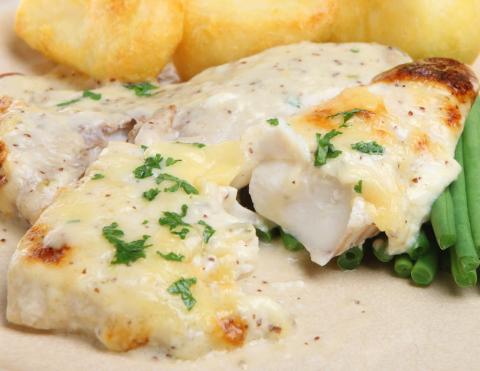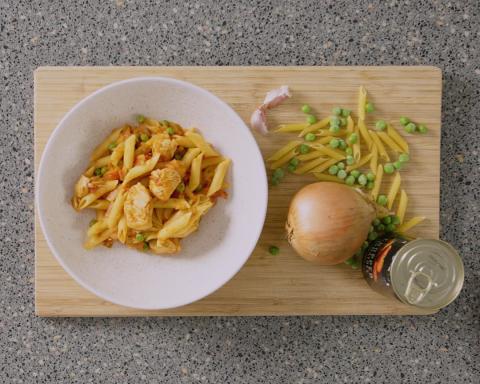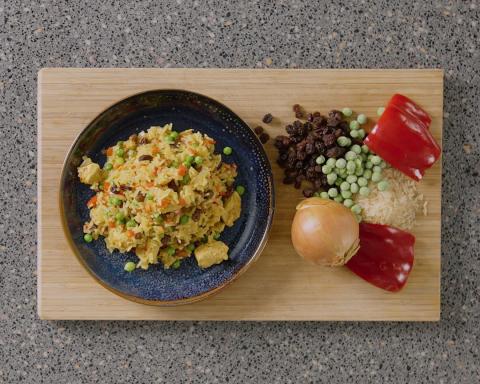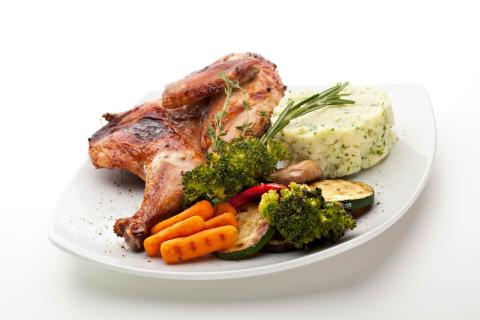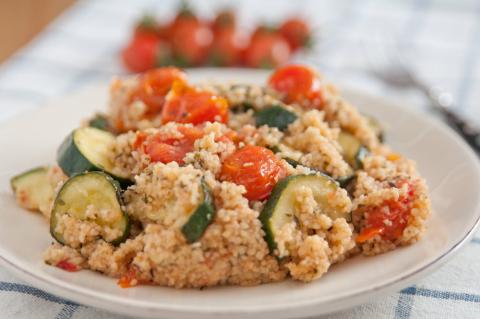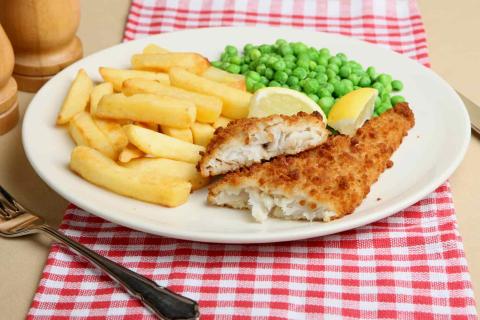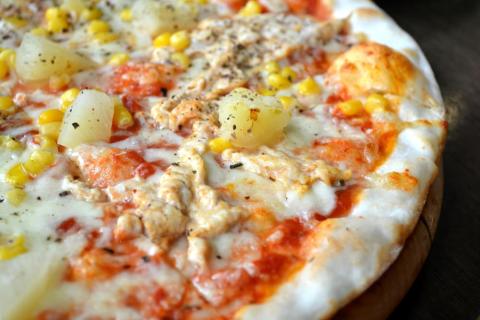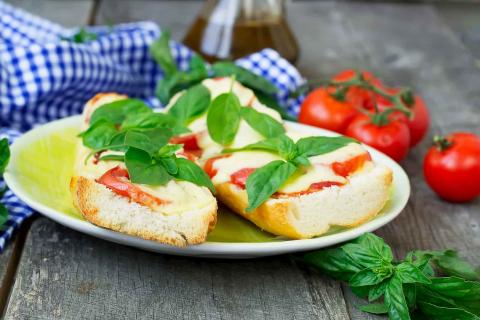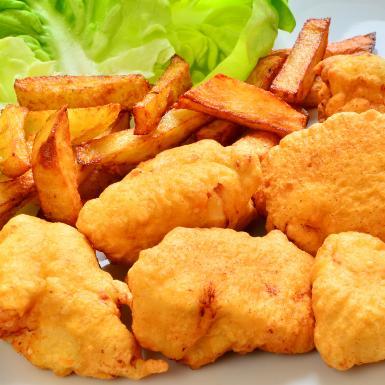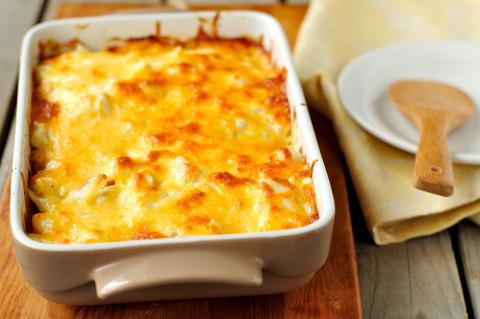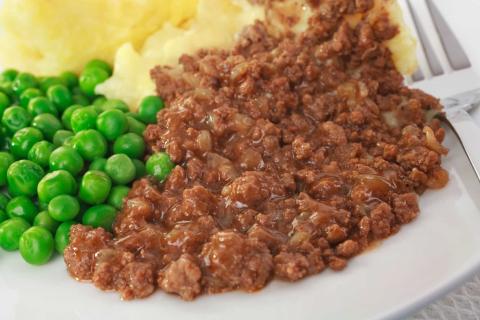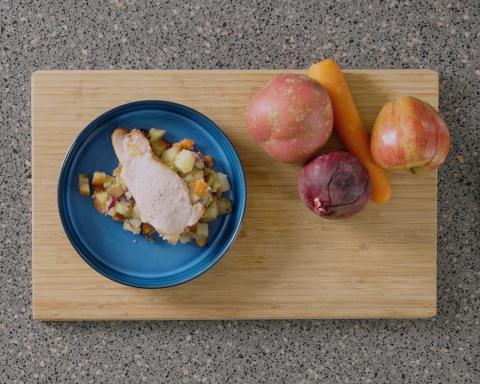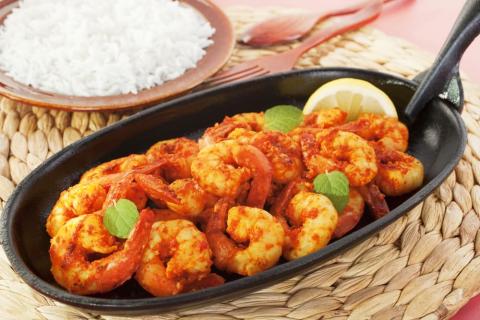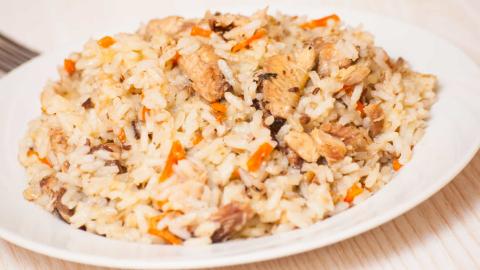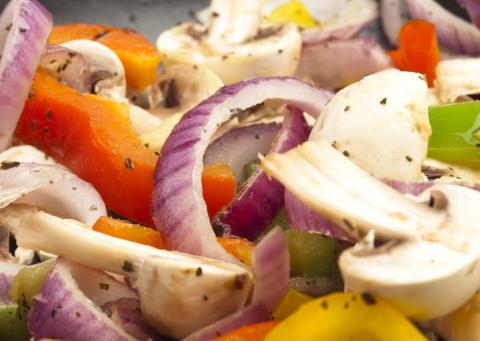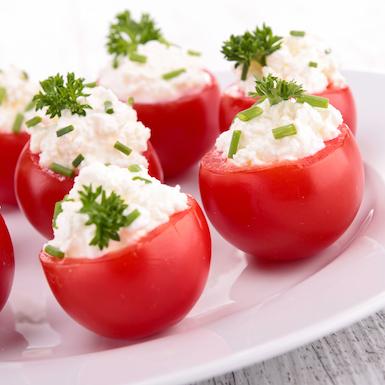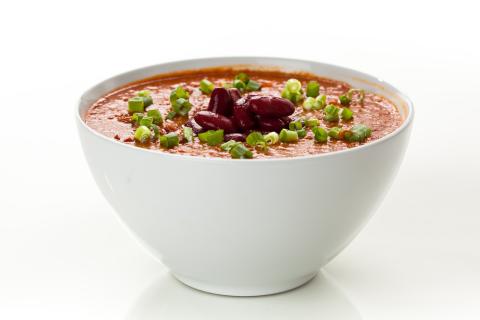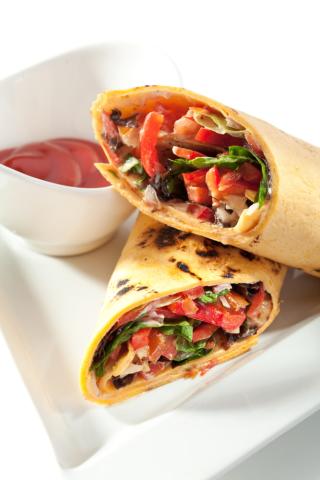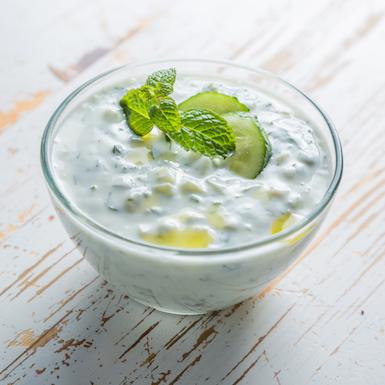- 1 Tablespoon (10g) Vegetable Oil
- 1 Large (240g) Onion
- 1 Tin (400g) Chopped or Plum Tomatoes
- 3 Tins (375g) Scottish Mackerel in Brine
- 6 Large (880g) Potatoes
- 7 Tablespoons (100ml) Semi-Skimmed Milk
- 4 Tablespoons (100g) Cheddar Cheese (choose reduced fat whenever possible)
- 1 Pinch Black Pepper to taste
Ingredients
Allergy Disclaimer
Always check the label of each ingredient for allergy warnings.
Method
- Preheat the oven to 180°C / 160°C fan oven / 350°F / gas mark 4.
- Peel the potatoes and cut into cubes, then boil them until they're soft.
- Peel and chop the onion. Heat oil in pan and fry the onions until golden.
- Add the chopped tomatoes, drained mackerel and pepper. If using plum tomatoes, chop them up using a spoon when in the pan. Stir mixture and heat through.
- Mash the potatoes with milk until smooth. Grate the cheese.
- Place the fish mixture into an oven proof dish and then spoon the potato on top. Sprinkle the grated cheese on top.
- Place in oven for about 20 minutes until the top is golden brown. Serve with your favourite vegetables.
Time Saver Tips
Why not prepare this fish pie in advance so it’s ready to just pop into the oven later? You could even make it in bulk ready to use another day.
Tips for Kids
If your wee one finds the taste a bit too strong at first, you could try using a mixture of mackerel and a white fish to begin with. Then gradually put in more mackerel over time so they get used to the flavour. To reduce salt intake, fresh mackerel is a really good choice. You could even use salmon – whichever fish your little one likes best. This is extra healthy and tasty when you serve it with your child’s favourite vegetables – fresh, frozen or out of a can.
Nutritional Information
Based on a single serving of 506g (% of an adult's reference intake)
Energy
421 kcals ( 22 %)
1,609 kJ ( 22 %)
Fat
5.1 g ( 26 %)
Saturates
44.8 g ( %)
Sugar
12 g ( 13 %)
Salt
0.8 g ( 13 %)
Detailed nutritional information
| Per 100g | Per 506g serving | |
|---|---|---|
| Energy Kcals | 83 | 421 |
| Energy Kj | 318 | 1,609 |
| Protein | 5 g | 25.3 g |
| Total Fat | g | g |
| Saturated Fat | 1 g | 5.1 g |
| Carbohydrates | 8.9 g | 44.8 g |
| Total Sugars | 2.4 g | 12 g |
| NSP Fibre | 0.8 g | 3.8 g |
| Sodium | 67 mg | 337 mg |
| Salt | 0.2 g | 0.8 g |
Find out about nutritional labelling
Nutrition labels on the front of packaging
- Most of the big supermarkets and many food manufacturers display nutritional information on the front of pre-packed food.
- Front of pack nutrition labels provide information on the number of grams of fat, saturated fat, sugars and salt and the amount of energy (in kJ and kcal) in a serving or portion of a recipe.
- The labels also include information about reference intakes (expressed as a percentage) which are guidelines about the approximate amount of particular nutrients and energy required for a healthy diet.
- The colour coding tells you at a glance if the food has high (red), medium (amber) or low (green) amounts of fat, saturated fat, sugars and salt.
- The more greens on the label, the healthier the choice
- Amber means neither high nor low, so you can eat foods with all or mostly ambers on the label most of the time.
- Reds on the label means the food is high in that nutrient and these are the foods we should cut down on. Try to eat these foods less often and in small amounts.
Food shopping tips
If you’re trying to decide which product to choose, check to see if there's a nutrition label on the front of the pack. This will help you to quickly assess how your choices stack up. You will often find a mixture of red, amber and green colour coding for the nutrients. So when you're choosing between similar products, try to go for more greens and ambers and fewer reds if you want to make a healthier choice.
 Activities & Play
Activities & Play Behaviour
Behaviour Childcare
Childcare Development & Growing Up
Development & Growing Up Family, Friends & Relationships
Family, Friends & Relationships Feeding Your Baby
Feeding Your Baby Food & Eating
Food & Eating Health & Safety
Health & Safety Mental Health & Wellbeing
Mental Health & Wellbeing Money & Work
Money & Work Online Behaviour & Safety
Online Behaviour & Safety Pregnancy & First Days
Pregnancy & First Days School & Education
School & Education Sleep
Sleep













